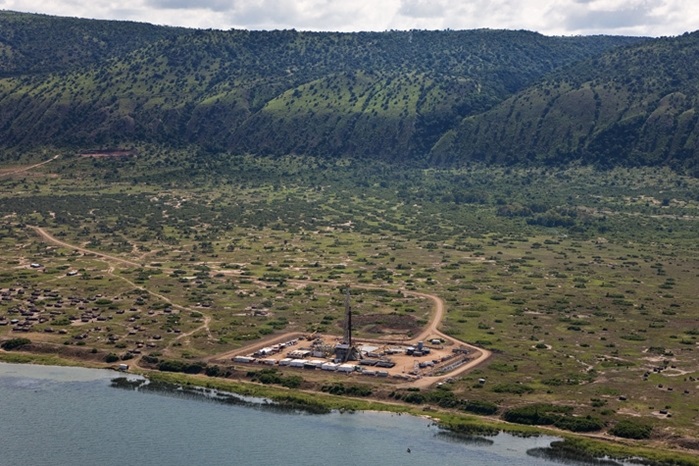
Kampala, Uganda | THE INDEPENDENT | The restoration of Murchison Falls National Park ecosystem where oil wells were dug during the exploration of the Albertine Graben remains incomplete. Total E&P, the company in charge of the process says that there are still some remedial work to undertake in some of the sites.
Collectively, the company drilled at least 40 Exploration and Appraisal Wells inside Murchison Falls National Park in Oil Exploration area One.
Andrew Ddamba Gwabali, the Uganda Total E&P Environment and Diversity Field Officer says that some of the sites pending restoration are hosting studies in preparation for oil production. In such areas, new boreholes have been drilled for detailed studies on underground waters (aquifers).
Gwabali however explains that the sites that have completely been restored exhibit favorable environmental stability, more than Seven years after their restoration. He says that the stability has allowed different wild species including plants and animals to re-habit such areas undisturbed.
The exploration sites that have been completely restored include those drilled as Exploration Wells and Appraisal Wells and their associated facilities such as access roads.
Gwabali says majority of the sites technically known as disturbed ecosystems have regenerated back to their original status before exploration took place. An appraisal well is an underground facility used in determining the quantity of underground crude oil while the exploration well indicates the presence of crude oil under the ground.
Uganda Radio Network visited Jobi-4 Appraisal Well, drilled on August 5, 2012 and restored on May 30, 2013 to observe the regeneration of nature in the area. At the site, termites have built a giant mount, about five meters north of the base of the concrete mark stone of the Appraisal Well.
On top of the termite mount, is a Savannah shrub tree with green lush leaves. Around this feature, fresh wildlife dung indicates visitation of wildlife in the night. The surface of the disturbed area has regained its natural appearance with other untouched sections so much so that it is difficult for one to tell that some human activities took place here unless told so.
Chris Ocowun, the Total E&P Public Relations Coordinator says Exploration and Appraisal activities caused significant disturbance to fragile park ecosystem. He says Oil Companies were required to minimize disturbance to wildlife as much as possible.
Ocowun says the law requires involvement of local leaders and park authorities at every stage of restoration to ensure that no malice is done to the park ecosystem.
Ocowun explains that during restoration, drill pad soils are scarified before they are replanted with native grasses and watered. He says this is done with involvement of the Uganda Wildlife Authority Environment Monitoring Warden.
According to Gwabali, it is extremely difficult to tell that disturbance of the park ecosystem affected an area of land measuring 100 square meters without being told due to the high level of success in the restoration.
Since commercial oil discovery in the Albertine Graben in 2008, communities in Nwoya district neighboring Murchison Falls National Park have blamed increase in human – wildlife conflict on oil exploration activities. They say the activities pushed wildlife close to each other as park habitats were taken over or disturbed by oil exploration activities.
The community fears prompted a series of studies to establish the impacts of oil exploration and environment restoration activities on Wildlife in Murchison Falls National Park. Results of one such research was published in the African Journal for Ecology in December 2018.
The study planted Cameras in the various restored sites to record their interactions with wildlife. It found that giraffe returned to park ecosystems with heavy density of restored drill pads compared to any other mammals. Overall, the study concluded that wildlife never avoided the oil disturbed areas throughout their studies.
Findings have been published under the title “Assessing the impacts of oil exploration and restoration on mammals in Murchison Falls Conservation Area, Uganda”.
******
URN
 The Independent Uganda: You get the Truth we Pay the Price
The Independent Uganda: You get the Truth we Pay the Price

